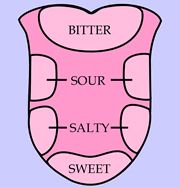"Old wine in new bottle"- is the common refrain to denote cosmetic changes to an existing product. But there’s a subtle variability in its interpretation. If the concerned product is nothing to write home about, cosmetic changes appear unnecessary and maybe a desperate means to ameliorate product consumption. But what if the product is already in the hall of fame? It leads to another proverbial description- “cherry on the icing”.
The latter interpretation was on full display as one of India’s leading wine producers Grover Zampa Vineyards (GZV) relaunched their flagship wine La Réserve innovatively, pairing it with a customized barbeque menu by hotel JW Marriott,New Delhi. Titled “La Réserve Barbeques” the Delhi launch was last in series of similar events in Mumbai and Bangalore.
 |
| An infographic from Grover Zampa Vineyards to depict the change |
About La Réserve
Those familiar with Indian wines would probably agree that La Réserve Red from GZV has attained cult status on the Indian wine front ever since it was launched in 1998 . After having developed a distinctive French inclined ‘house style’, courtesy their active collaboration with famed wine consultant Michel Rolland and French winemaker Mathias Pellisard, GZV have been successfully able to place this wine as their “prestige cuvée”. The wine is the result of hand-picked selection of GZVs oldest Cabernet Sauvignon and Shiraz vines vinified and matured in French oak barrels.
Completing the ensemble offering, La Réserve White is a barrel fermented Viognier which according to GZV, is elaborated vintage after vintage with the same zeal as La Réserve Red.
Apart from the refined disposition of La Réserve wines , my personal opinion finds their utmost USP as being in their consistent quality- which is a difficult ballgame in a non standardized wine industry like India. This prompted me to ask their CEO Sumedh Singh Mandla “ How are you able to ensure a consistent taste more so when you are producing these wines in two distinct geographical locations (Nandi hills in Karnataka and Nashik Valley in Maharashtra) with different terroir elements ? Sumedh’s reply was quite plausible, as he highlighted that the cuvée blends are carefully managed to incorporate a minimum percentage of common inputs from their oldest vineyards. Though they do not maintain a stock of Réserve wines for blending, it is the quality of produce that is ensured through sound viticultural practices and oenological expertise at hand.
The New Avatar
The new packaging of La Réserve is not restricted to the label alone. A chunkier broad shouldered bottle similar to the Super Tuscans, is weightier and power inducing. While the older ‘white-gold-black’ label was minimalistic and appeared Victorian, the newer one is big, bold and flamboyantly sophisticated keeping pace with the current times. The embossed graphics in dark grey, wine red and gold/silver (for red/white wines respectively) are a pleasing combination complemented with a pleasant tactile feel. Another layer of differentiation is rendered by the capsules- gold for red, and silver for white - which makes the variants' identification easy even from a distance. The price of both these wines ex Delhi retail is ₹ 1050.00.
The Launch event
Anticipative guests comprising of trade professionals and media witnessed unveiling of the new labels by Sumedh Singh Mandla, CEO GZV and Antony Page, GM JWM, New Delhi even as they savoured the same wines. Though the organizers had envisaged an outdoor setting, the Indian monsoon dictated otherwise, resulting in the last minute shift to the crystal ballroom at JWM. The contingent venue (and the JWM team) did well to spaciously accommodate the gathering as well as the bar/ live barbeque stations.
 |
| Sumedh Singh Mandla (L) and Antony Page (R) unveiling the new bottles |
As mentioned above, JWM Delhi has evolved a special barbeque menu for the La Réserve wines. It is common knowledge that a robust red wine invariably goes well with rustic barbeque preparations, however with a white wine included, more planning is necessitated than meets the eye. JWM handled this aspect well by incorporating white wine centric canapés and cheeses as pass arounds, well recognizing that most guests would prefer to sample the white wine first. However for those not meeting this assumption, the main spread too had ample options to support their preference. The respective food stations were made interesting with witty chalkboard graffiti which fired the imagination further.
Hit Pairings at the Launch
With La Réserve Red
Pork Finochiona sausage
Moroccan lamb merguez with red wine jus
Fettucini pasta with thyme infused mushroom ragout
With La Réserve White
Prawns with spicy garlic lemon marinade
Fromage de chevre with crisps
Salad- poached chicken, French beans and prunes with honey mustard vinaigrette









